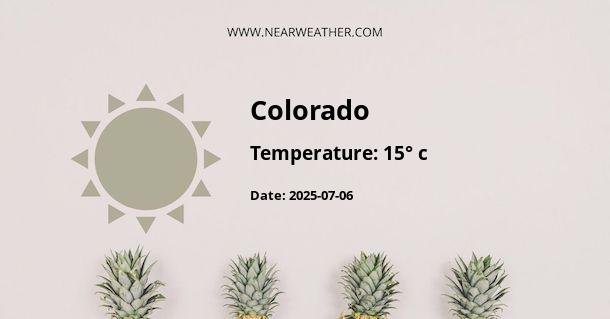Colorado: Climate and Weather Overview
Nestled in the heart of the Rocky Mountains, Colorado offers a diverse climate and weather patterns that vary significantly by region. The state's elevation, topography, and proximity to mountain ranges and plains all contribute to its unique weather characteristics. Understanding Colorado's climate can help residents and visitors alike better prepare for the diverse conditions they may encounter throughout the year.
Seasonal Weather Patterns
Colorado experiences four distinct seasons, with each offering its own set of weather conditions.
Spring (March to May)
Spring in Colorado brings fluctuating temperatures, occasional snowstorms, and rapidly changing weather. While lower elevations may experience milder weather and blooming wildflowers, higher elevations can still be blanketed in snow. It is a transition period from winter to summer, with varying conditions across the state.
Summer (June to August)
Summers in Colorado are generally warm to hot, especially in the plains and lower elevations. However, the higher elevations and mountainous areas offer cooler temperatures, making them popular destinations for outdoor activities and escape from the heat. Afternoon thunderstorms are common, especially in the mountains, providing much-needed moisture during the dry season.
Fall (September to November)
Colorado boasts stunning fall foliage as the aspen trees turn vibrant shades of gold, creating picture-perfect landscapes. The weather tends to be pleasant, with cooler temperatures and generally drier conditions. However, early snowstorms can occur in the higher elevations as winter gradually approaches.
Winter (December to February)
Winter in Colorado brings cold temperatures and ample snowfall, especially in the mountains. Ski resorts thrive during this season, attracting winter sports enthusiasts from around the world. While the plains and lower elevations can experience milder winter weather, sudden snowstorms and freezing temperatures are not uncommon.
Regional Climate Variations
Colorado's climate can be broadly categorized into two main regions: the eastern plains and the western mountains.
Eastern Plains
The eastern plains of Colorado are characterized by a semi-arid climate with low precipitation and large temperature differentials between day and night. Summers are hot, often reaching triple-digit temperatures, while winters can be cold with occasional blizzards and strong winds. This region experiences a wide range of weather phenomena, including thunderstorms, tornadoes, and droughts.
Western Mountains
The western part of Colorado, dominated by the Rocky Mountains, features a more alpine climate with cooler temperatures and greater precipitation. Snowfall is significant during the winter months, creating ideal conditions for winter sports and activities. The mountainous terrain also contributes to microclimates, with variations in weather patterns based on elevation and proximity to mountain ranges.
Annual Weather Averages
Here are the average annual weather statistics for selected cities in Colorado:
| City | Average High (°F) | Average Low (°F) | Average Annual Precipitation (in) | Average Annual Snowfall (in) |
|---|---|---|---|---|
| Denver | 64 | 34 | 14.3 | 60.2 |
| Colorado Springs | 61 | 32 | 16.5 | 35.4 |
| Aspen | 59 | 28 | 24.6 | 176.3 |
These averages provide a general overview of the climate in different parts of the state, but it's essential to note that specific weather conditions can vary widely from year to year.
Climate Change and Adaptation
Colorado, like many other regions, is not immune to the impacts of climate change. Rising temperatures, changes in precipitation patterns, and more frequent extreme weather events pose significant challenges for the state's residents and ecosystems. Efforts to mitigate these effects and adapt to a changing climate are ongoing, with a focus on sustainable practices, water conservation, and resilience planning.
Conclusion
Colorado's climate presents a rich tapestry of weather patterns and climatic diversity, offering something for everyone, from outdoor enthusiasts to nature lovers. Understanding the seasonal variations and regional climate differences can help individuals make the most of all that Colorado has to offer, while also fostering an appreciation for the state's natural beauty and resilience in the face of changing environmental dynamics.
A - Colorado's Latitude is -22.837500 & Longitude is -51.973061.
A - Weather in Colorado is 24° today.
A - Climate Conditions in Colorado shows clear sky today.
A - Humidity in Colorado is 67% today.
A - Wind speed in Colorado is 12.1 km/h, flowing at 107° wind direction. today.
